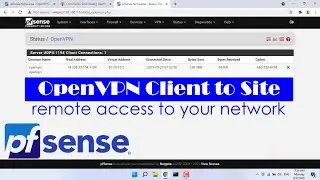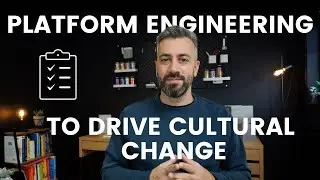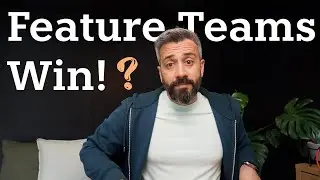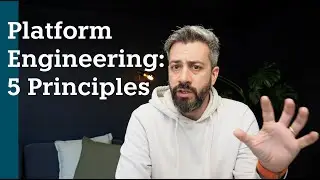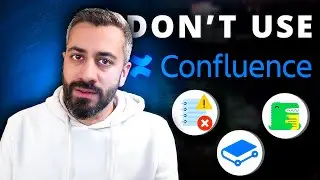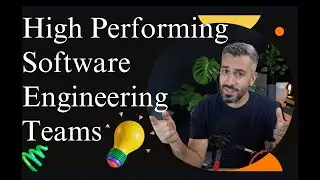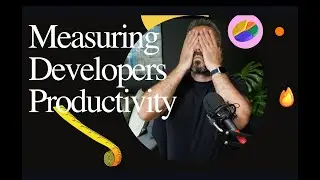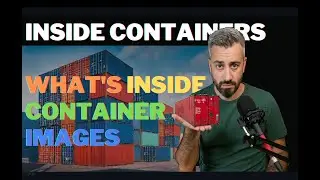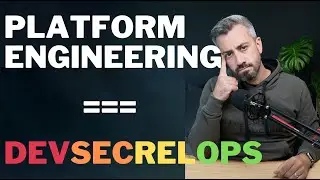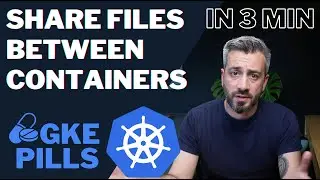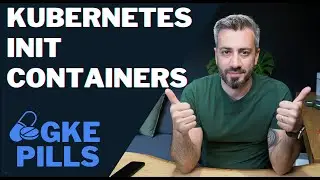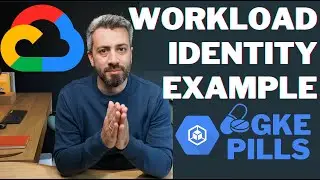Unlocking High Performing Software Engineering Teams
Welcome to my channel! In this video, we'll dive into the crucial concept of psychological safety and its profound impact on software engineering and any role that demands creativity. Before we delve in, if you're passionate about software engineering, coding, and fostering a positive developer experience, consider subscribing!
Our work in software engineering is inherently creative. It involves problem-solving and finding innovative solutions to complex challenges, far beyond mere code-writing or following instructions. But to tap into that creativity, we need something essential: psychological safety.
Psychological safety is an environment where you feel free to express yourself without fear of judgment or consequences. It's about having the confidence that you won't be punished or humiliated for speaking up or trying something new. Why does it matter? Because creativity thrives in an atmosphere of trust and openness.
In software engineering, we're driven by intrinsic motivation – that inner fire. Daniel Pink's book "Drive" highlights three key elements of intrinsic motivation: autonomy, mastery, and purpose.
Autonomy means having the freedom to explore new ideas and take ownership of problems. Mastery is the continuous pursuit of improving our skills, a driving force for software engineers. Purpose comes from knowing that our work makes a difference.
Now, think about how these elements thrive in a psychologically safe environment:
Autonomy: Feeling in charge, believing you can explore new ideas, and taking ownership of problems are vital. This autonomy fuels innovation and self-directed problem-solving.
Mastery: Software engineers are constantly learning, striving for mastery. It's the intrinsic motivation to get better at what we do. Learning is driven from within.
Purpose: We want our work to matter. Even if it's not a grand, noble cause, we strive to ensure our work benefits someone, changes something, and contributes positively.
But here's the key: these elements can only exist when you feel psychologically safe.
So how can you create a psychologically safe environment in your team or organisation? While there's no one-size-fits-all solution, here are some starting points:
Encourage Open Communication: Transparency and crystal-clear goals, even when things go awry, set the tone. Leadership leads by example.
Empower Development Teams: Ask for their input, involve them in decision-making. Don't just cascade requirements without seeking their opinions. This empowers and motivates.
Don't Punish Failures: Failure is a chance to learn. Foster a culture that views failure as an opportunity for growth and continuous improvement.
In conclusion, working in a psychologically safe environment benefits everyone involved and enhances the overall performance of the entire company. Just as in my previous video where I discussed the limitations of measuring developer productivity, it's vital to recognize that software engineers thrive in psychologically safe spaces.
Share your thoughts in the comments, and if you found this video insightful, don't forget to subscribe. Thanks for watching, and I'll see you in the next one. Bye!
00:00 Introduction
00:26 The Need for Psychological Safety
00:56 Defining Psychological Safety
01:25 Psychological Safety and Creativity
02:10 Linking Creativity and Psychological Safety
02:41 Daniel Pink's Insights
03:11 Intrinsic vs. Extrinsic Motivation
03:36 The Three Elements
04:17 Autonomy and Mastery
04:55 Purpose
05:19 The Role of Psychological Safety
05:42 Building a Psychologically Safe Environment
06:17 Empowering Development Teams
06:45 Embracing Failure and Learning
06:50 Conclusion
WHO AM I:
Hey friends, welcome to my YouTube channel @outofdevops . If you're new my name is Anto, here I talk about software engineering and software engineers. Don't forget to comment like and subscribe 👍🏻.
YOUTUBE GEAR:
🎥 My YouTube Camera Gear - https://kit.co/outofdevops
MY SOCIAL LINKs:
🐦 Twitter - / outofdevops
📘 Facebook - / outofdevops
📰 My blog - https://amasucci.com
📸 Instagram - / outofdevops
GET IN TOUCH:
If you’d like to talk, I’d love to hear from you. Tweeting @OutOfDevOps directly will be the quickest way to get a response, but if your question is very long, feel free to email me at [email protected].
PS: Some of the links in this description are affiliate links that I get a kickback from 😜



